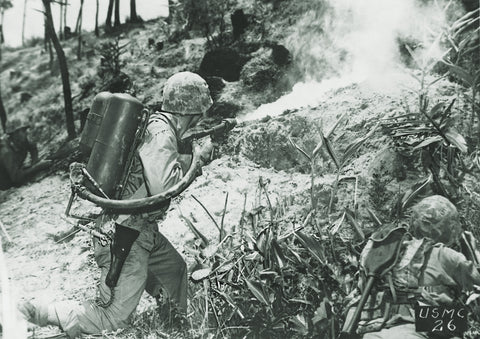
Why the Flamethrower Became so Effective (and Terrifying)
Few weapons evoke a more visceral reaction than the flamethrower, which manages to retain an aura of coolness while simultaneously eliciting almost primal terror. The first flamethrowers, developed by Germany early in the 20th century, targeted French and British trench fighters during World War I. The United States came up with its own version at the beginning of World War II, but the first model, the M1, was notoriously unreliable—operators often resorted to carrying backup ignition sources like cigarette lighters to ensure the flame actually lit. After modifications, in 1943 the army rolled out the M2-2, which became the standard flamethrower for the rest of the war. It was used to great effect in the Pacific against dug-in Japanese defensive positions. Flamethrowing tanks developed in 1944–45 soon became the preferred weapon in the class, and the prevalence of the portable versions faded.
